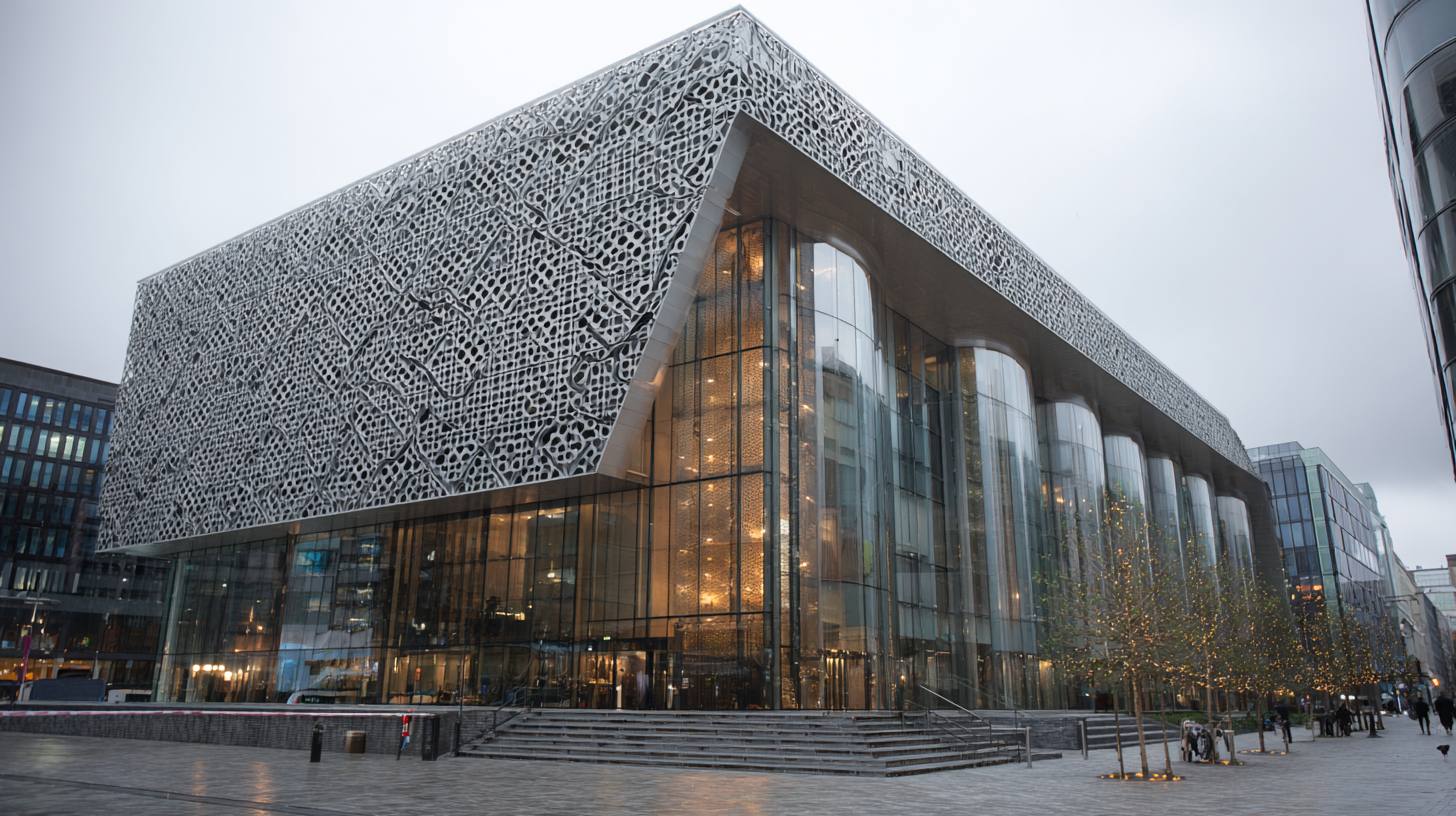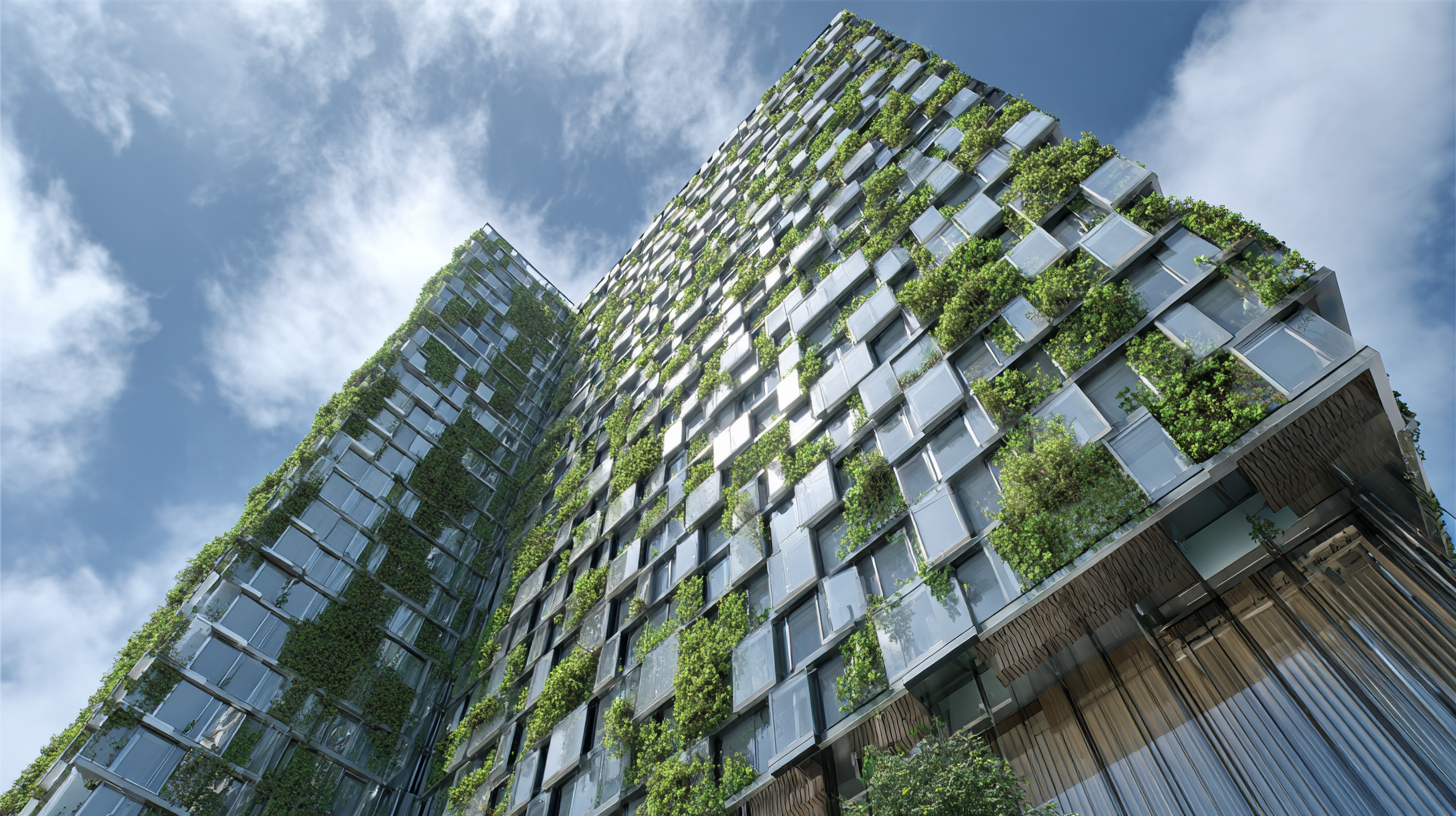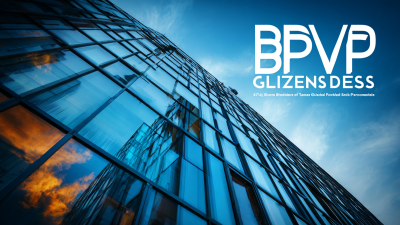
The global push towards sustainable building practices has led to the widespread adoption of innovative technologies, and one such advancement is Bipv Solar Facade Glass. This cutting-edge building-integrated photovoltaic (BIPV) solution not only enhances the aesthetic appeal of structures but also significantly contributes to energy efficiency. According to a report by the International Energy Agency (IEA), buildings account for approximately 36% of global energy use and 39% of CO2 emissions. By integrating solar facade glass into the architectural design, developers can mitigate these environmental impacts while simultaneously harnessing renewable energy.
Moreover, market research from Grand View Research indicates that the global BIPV market is expected to reach USD 35.9 billion by 2025, driven by increasing demand for sustainable construction materials and policies favoring green building certifications. Bipv Solar Facade Glass exemplifies this shift, offering not just functional benefits such as energy generation and thermal insulation, but also addressing aesthetic concerns important to architects and builders. By examining the top benefits of Bipv Solar Facade Glass, stakeholders can understand its critical role in the evolution of sustainable architecture and urban development.

 Building Integrated Photovoltaics (BIPV) solar facade glass represents a significant advancement in sustainable building design, particularly in enhancing energy efficiency solutions. According to the International Energy Agency, buildings account for approximately 40% of global energy consumption, making them a crucial target for energy efficiency improvements. The integration of solar facade glass into building structures not only contributes to reducing this energy consumption but also generates renewable energy on-site, effectively diminishing reliance on fossil fuels.
Building Integrated Photovoltaics (BIPV) solar facade glass represents a significant advancement in sustainable building design, particularly in enhancing energy efficiency solutions. According to the International Energy Agency, buildings account for approximately 40% of global energy consumption, making them a crucial target for energy efficiency improvements. The integration of solar facade glass into building structures not only contributes to reducing this energy consumption but also generates renewable energy on-site, effectively diminishing reliance on fossil fuels.
Data from recent studies showcase that BIPV installations can provide up to 30% of a building's energy needs, depending on design and location. This unique approach transforms traditional building materials into energy-generating components, allowing architects and builders to leverage aesthetics alongside functionality. Moreover, a report from the U.S. Department of Energy indicates that BIPV technology may result in a 20% reduction in energy costs over the lifespan of a building. By utilizing solar facade glass, buildings can enhance their overall performance while contributing to sustainability goals, illustrating the vital role of innovative materials in today's architectural practices.
The integration of Building-Integrated Photovoltaics (BIPV) solar facade glass in architectural design presents significant aesthetic advantages. This innovative material not only serves a functional purpose but also enhances the visual appeal of buildings. By blending seamlessly with various architectural styles, BIPV glass can be tailored to match the design ethos of contemporary structures, providing a modern, sleek appearance that reflects a commitment to sustainability.
Moreover, BIPV solar facade glass offers designers the opportunity to experiment with light and transparency. The ability to customize colors and patterns allows architects to create unique facades that stand out in urban environments. These striking designs can serve as focal points, attracting attention and contributing to a building's identity. As cities become more focused on sustainable practices, the artistic potential of BIPV glass enhances not only the aesthetic value but also the overall marketability of a property.

Building-integrated photovoltaics (BIPV) represent a revolutionary step in sustainable architecture, merging aesthetics with functionality. By incorporating solar facade glass, buildings not only generate renewable energy but also significantly reduce their environmental impact. This innovative design helps to minimize reliance on conventional energy sources, thus lowering greenhouse gas emissions and the overall carbon footprint of construction.
Tips: When designing with BIPV, consider incorporating transparent or semi-transparent solar glass that allows natural light to penetrate while still generating energy. This can enhance the indoor environment, reducing the need for artificial lighting and consequently decreasing energy consumption.
Moreover, BIPV solutions can contribute to energy savings by acting as effective insulators, helping to regulate building temperatures. This insulation can reduce the burden on heating and cooling systems, yielding further reductions in energy use. Ensuring proper orientation and placement of BIPV systems is crucial; applying ideas from passive solar design can maximize energy capture and efficiency.
| Benefit | Description | Environmental Impact |
|---|---|---|
| Energy Generation | Converts sunlight into electricity directly via building facades. | Reduces reliance on fossil fuels and lowers carbon footprint. |
| Thermal Insulation | Improved insulation properties help maintain interior temperatures. | Decreases energy consumption for heating and cooling. |
| Aesthetic Integration | Seamlessly blends into building designs without compromising aesthetics. | Enhances urban beauty while promoting sustainable solutions. |
| UV Protection | Filters harmful UV rays to protect interior furnishings and occupants. | Promotes healthier indoor environments. |
| Reduced Heat Island Effect | Mitigates urban heat buildup through reflective and absorptive materials. | Helps balance urban temperatures and improves air quality. |
| Durability | Designed to withstand harsh weather and environmental conditions. | Lowers maintenance costs and material waste over building lifespan. |
| Noise Reduction | Sound-dampening properties improve indoor acoustic comfort. | Enhances quality of life for building occupants. |
| Grid Independence | Facilitates on-site energy production, reducing reliance on the grid. | Promotes self-sufficient and resilient building designs. |
| Investment Value | Increases the property value due to energy efficiency and modern design. | Supports sustainable real estate developments. |
| Sustainability Certification | Contributes to certifications like LEED or BREEAM. | Encourages eco-friendliness in construction and design practices. |
BIPV (Building-Integrated Photovoltaics) solar facades represent a transformative approach to sustainable building design, combining aesthetics with functionality. One of the primary cost advantages of BIPV systems is their dual role; they serve as building materials while generating energy. According to a report by the International Renewable Energy Agency (IRENA), BIPV installations can reduce electricity costs over their lifespan by up to 30%, significantly enhancing a building's overall economic profile. Furthermore, the Solar Energy Industries Association (SEIA) notes that BIPV can qualify for various incentives, including federal tax credits, which can cover a substantial portion of the initial investment.
Beyond initial costs, the long-term financial benefits of BIPV solar facades are noteworthy. A study by the National Renewable Energy Laboratory (NREL) indicates that buildings equipped with BIPV systems can achieve up to 15% higher property values due to their energy efficiency and modern appearance. Additionally, these installations can lead to reduced operational costs by lowering energy consumption. As energy prices continue to rise, the return on investment for BIPV solutions becomes increasingly attractive, making them not only an eco-friendly choice but also a financially sound one for forward-thinking developers and architects.
BIPV (Building-Integrated Photovoltaics) technology is revolutionizing sustainable building design by seamlessly integrating solar energy generation into the facade of buildings. One of the key benefits of BIPV is its ability to enhance building performance. According to the International Energy Agency, integrating BIPV can contribute to energy savings of up to 30% in commercial buildings. This remarkable efficiency is achieved through the dual function of building materials, which not only provide protection and aesthetic appeal but also generate clean energy.
Additionally, BIPV systems significantly improve occupant comfort. Research from the U.S. Department of Energy indicates that buildings equipped with BIPV glass can maintain better thermal performance, reducing reliance on traditional heating and cooling systems. This leads to an enhanced indoor environment, which directly correlates with increased productivity and well-being among occupants. Furthermore, BIPV technology allows for added sound insulation, making spaces quieter and more conducive to focus and relaxation. The integration of these functionalities positions BIPV as a vital element in future sustainable architecture, fostering a harmonious balance between energy efficiency and occupant comfort.
This bar chart illustrates the various benefits of BIPV solar facade glass in sustainable building design, highlighting aspects such as energy generation and sustainability that enhance overall building performance and comfort.





